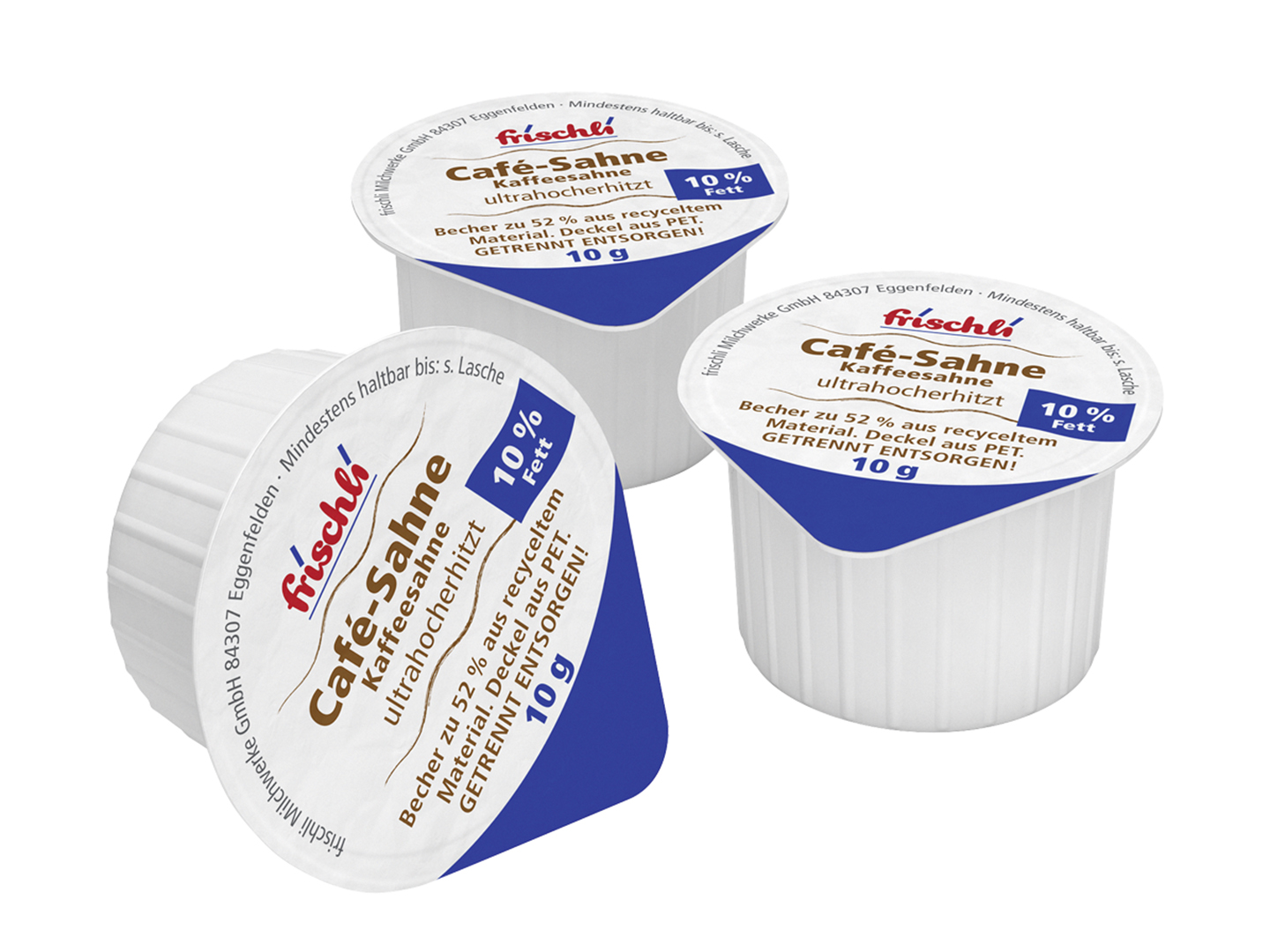Life cycle assessment
Coffee milk in the catering industry: Reusable or portion packaging
A new EU regulation* provides for a ban on small individual packaging made from disposable plastic for coffee creamers. These consist of a polystyrene base film and an aluminum lid, both of which are usually incinerated after use. An alternative in the hospitality industry, e.g. in bakeries, cafés or in the travel sector, are reusable solutions. Fraunhofer UMSICHT carried out a life cycle assessment for the company frischli Milchwerke to investigate the advantages and disadvantages of reusable solutions such as ceramic jugs or thermos flasks compared to individual packaging.
Avoiding non-recyclable packaging or replacing it with environmentally friendly packaging is an important goal on the way to a sustainable packaging industry. This will greatly reduce the CO2 footprint. However, the environmental impact of food loss must also be taken into account, which can play a greater role in reusable systems due to hygiene regulations.
In the case of perishable products such as coffee milk, for example, these require that unused coffee milk must be disposed of as soon as it has been offered to customers in a jug. Researchers at Fraunhofer UMSICHT therefore investigated the point at which additional CO2 emissions from food waste outweigh the additional CO2 emissions from small individual packaging. The reusable alternatives considered were 100 ml coffee pots made of porcelain and 0.5 liter thermos flasks made of stainless steel. For the reusable systems, it was assumed that the milk is transported to the points of sale in 1 liter Tetra-Paks. For the comparison, the researchers also included innovative individual packaging designs: Here, the aluminum lid and polystyrene are replaced with polypropylene or recycled polystyrene. The result: without taking food losses into account, reusable systems cause fewer greenhouse gases compared to all individual packaging.
Food waste versus CO2 footprint of individual packaging
In order to investigate the relevance of food losses, the researchers calculated the break-even point in their analysis, which shows the percentage of milk that has to be thrown away with the reusable alternatives until the CO2 footprint corresponds to that of individual packaging. The range is between 3 and 27 percent - with the lowest value applying to the polypropylene-based individual packaging variant . "The result shows that, depending on the type of packaging, even with low food losses, the reusable alternative can no longer be the solution with the lowest CO2 footprint. Even if the environmental impact of packaging should be reduced as far as possible, the trade-off with food losses should always be taken into account. Environmentally friendly packaging designs - e.g. through optimized material selection - can be a climate-friendly alternative to reusable systems, depending on the application," says Dr. Daniel Maga, explaining the results.
*Regulation of the European Parliament and of the Council on packaging and packaging waste (PPWR), amending Regulation (EU) 2019/1020 and Directive (EU) 2019/904 and repealing Directive 94/62/EC
Last modified:
 Fraunhofer Institute for Environmental, Safety and Energy Technology UMSICHT
Fraunhofer Institute for Environmental, Safety and Energy Technology UMSICHT